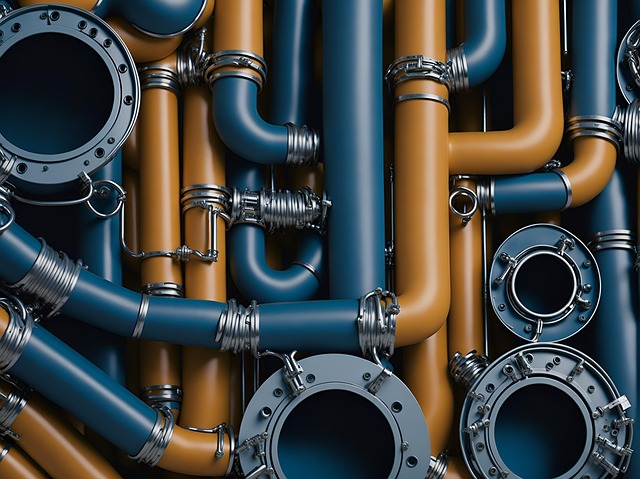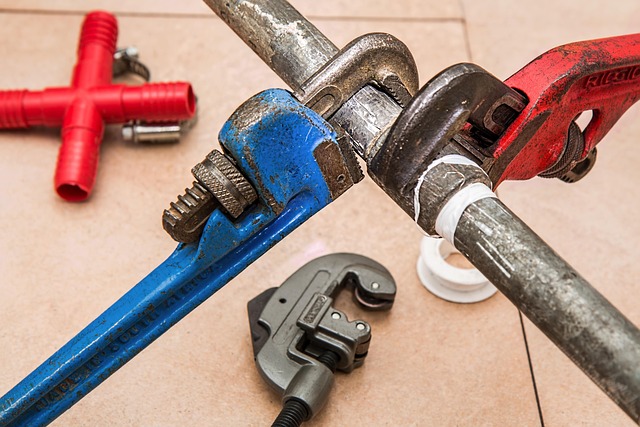Frozen pipes can cause severe damage, so proactive prevention is key. Identify high-risk areas like exposed pipes near outside walls and perform regular inspections. Key strategies include insulating vulnerable pipes, maintaining plumbing systems, and installing thermal expansion systems. Additionally, shut off outdoor hoses, maintain indoor heat, and address leaks or damage to avoid frozen pipes and costly repairs.
Frozen pipes aren’t just an annoyance; they can cause significant damage to your home. Understanding how cold temperatures affect plumbing is crucial for every homeowner. This article delves into the hidden dangers of frozen pipes, exploring the potential impacts from burst pipes and water damage to costly repairs. We’ll also equip you with effective strategies on How to Prevent Frozen Pipes, identifying vulnerable areas in your home, and safeguarding your plumbing system this winter.
- Understanding the Problem: The Impact of Frozen Pipes
- Identifying Risks and Vulnerable Areas in Your Home
- Effective Prevention Strategies: Protecting Your Plumbing System Now
Understanding the Problem: The Impact of Frozen Pipes

Frozen pipes are a common winter woe, but their impact can be far from minor. When water within piping systems freezes, it expands, putting immense pressure on the pipes and potentially causing them to burst. This not only leads to significant water damage but also poses risks of structural damage and costly repairs. The problem is exacerbated by factors like poor insulation, extreme weather conditions, and outdated plumbing systems. Understanding these risks is the first step towards preventing the hassle and financial strain associated with frozen pipes.
To prevent frozen pipes, homeowners should consider implementing several strategies. Adequate insulation around exposed pipes can help maintain a consistent temperature, reducing the likelihood of freezing. Regularly checking and turning on water to allow it to flow during cold snaps is another effective measure. Additionally, using heat tape or thermostatically controlled heating cables can provide targeted warmth to vulnerable areas. These proactive steps will ensure peace of mind during winter months and save you from dealing with the headaches caused by frozen pipes.
Identifying Risks and Vulnerable Areas in Your Home

Frozen pipes can cause significant damage to your home, leading to costly repairs and inconveniences. To prevent this issue, it’s crucial to identify risks and vulnerable areas within your property. Start by examining areas where pipes are most exposed to extreme cold, such as outside walls, attics, and basements. Look for places where insulation is inadequate or missing.
Pay close attention to pipes that are near doors or windows, as these are more susceptible to temperature fluctuations. Also, consider the age of your plumbing system; older pipelines might be less resilient to freezing temperatures. Regularly inspecting these areas during winter can help you take proactive measures like adding insulation or shutting off water supply to vulnerable sections when temperatures drop dramatically.
Effective Prevention Strategies: Protecting Your Plumbing System Now

Preventing frozen pipes is a proactive approach that every homeowner should consider, especially in regions with cold winters. One effective strategy is to insulate exposed pipes, focusing on areas like basements, attics, and outdoor sections. This simple step creates an extra layer of protection, preventing rapid temperature changes that can lead to freezing. Additionally, regular maintenance is key; checking for any signs of leaks or damaged pipes allows for quick repairs, reducing the risk of frost damage.
Another useful method is to consider a thermal expansion system. These systems use heating elements to keep water in pipes at a consistent, above-freezing temperature. This ensures that even during extreme cold snaps, your plumbing remains protected. How to prevent frozen pipes effectively involves combining these measures with good winterization practices, such as shutting off and draining outdoor hoses and ensuring heat is maintained at an adequate level throughout the home.
Frozen pipes aren’t just an inconvenient winter hassle—they can cause significant damage to your home and lead to costly repairs. By understanding the risks and implementing effective prevention strategies, you can protect your plumbing system year-round. Regular maintenance, insulation, and temperature control are key to avoiding frozen pipes. Don’t wait until it’s too late; start practicing these how-to-prevent-frozen-pipes tips today to keep your home safe and sound all winter long.
